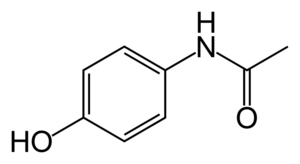Prior to writing this article I came across an Associated Content article entitled, “Why Two Blue Eyed People Can’t Produce a Brown Eyed Child,” by Michelle Williams. Her article was one of the most inaccurate pieces of fallacy I have seen published in any medium in a very long time. She was blindly following obsolete curriculum accrued way back in her high school biology class and is still taking it as the word of God despite well-publicized breakthroughs in DNA coding. The Davenport eye color model, which dates back to 1907, partially attributes to her ignorance as well as all of the skeptical mothers-in-law out there.
Her inability to accept criticism by fellow readers all but forced me to write about my own findings and experience with this subject.
Picture this if you will. One night my otherwise amazing Mother-in-law treated all of us to dinner at a very nice restaurant. A couple of times over the past five years she’s mentioned how my youngest daughter doesn’t really look like my husband. She thought that particular dining experience was another fine time to make a wisecrack about it.
We never thought much of her observations and were always amused when she brought it up. In fact I believe I was the one who originally noticed how my daughter’s complexion was a little off.
My husband, oldest daughter and I are all pale-skinned red-heads with tons of freckles, yet my youngest daughter has the same red hair but no freckles and has a darker complexion. She even tans, something I’m a little jealous about. Utterly shocked that our genes could produce a bronzed beauty, I’ve called her my Mexican milkman baby to both my husband and his mom in a joking way.
Back to that dinner; It was all fun and games until my Mother-in-law said, “She has really dark eyes. I mean it’s strange because brown eyes are dominant aren’t they?” Just then a light went off in my head. She was absolutely right about this. For the first time I had no comeback. I felt a little sick. Did she really believe I had cheated on my husband? Finally, after all these years, I understood what she meant by my daughter “not looking like” my husband. It went way beyond tan lines and a monotoned complexion.
My husband and I both have eyes that are somewhere between blue and green. His are almost entirely green with just a hint of blue and mine are almost entirely blue with specks of pure gold in the center making them look green only at certain angles or light levels. We have two daughters. My oldest daughter has these amazing blue eyes and my youngest daughter has dark brown eyes. The color is so pure and dark that sometimes her iris almost blends into her pupil. At that moment I was too taken back by her comment to think back to my recent college courses that touched on this subject.
By the time we returned home, all rationality had left my dumbfounded brain. Despite making sweet lovin’ only to my husband, I found myself asking him, “Baby, you do believe Alicia is yours, right? I mean you have deployed a lot and I’ll understand if you want to take a DNA test.”
He looked at me, laughed and said, “Of course she’s mine. Look at her! Don’t let my mom bother you.”
“But you do realize that she was dead on. Technically there is no way we could have spawned a brown-eyed daughter yet here she is. Doesn’t that bother you?”
The conversation ended right there and he assured me that I was being silly.
Suddenly my brain turned back on and I had a flashback to an anatomy and physiology course I completed not long before at Cal State San Mateo. I remembered re-learning the basics of the Punnett square and then reading a blurb about rarer eye color genomes. Since it was a basic course we didn’t dive into the specifics.
I hopped on the computer to see if our daughter’s eye color was really as rare as I assumed it was. I first ran into eye color generators where you plug in the parents’ eye colors and then the child’s eye color and each one said something to the effect of, “It is highly improbable that the man in question is the father of the child. The results weren’t surprising as they were nothing more than fancy yet basic Punnett squares.
After a little more searching I learned about an eye color gene (or allele) called oca2, which resides on chromosome 15 and comes in two different strengths – weak and strong. A person with a weak form of the oca2 gene will have blue eyes and a person with the strong form will have brown eyes. With this gene, two brown-eyed parents can produce children with blue eyes if they hand down the weak form of this gene, which is actually quite common. Two blue-eyed parents with the stronger version of the oca2 chromosome can produce children with brown eyes, although not always the deep whiskey brown my daughter has but brown nonetheless depending on how “strong” the oca2 gene happens to be.
Because the strong oca2 alleles can cause less definitive colors compared to solid brown eyes, I wasn’t satisfied and had to dive deeper to find my answer. It presented itself in the form of another gene possibility on that same 15th chromosome called bey2.
The bey2 gene can present itself as brown-brown, brown-blue or blue-blue. While the gene itself isn’t entirely rare it is rare for someone to have the brown-blue trait. Some geneticists go so far to say the bey2 brown-blue trait is a genetic abnormality caused by defective proteins on one of the alleles. A brown-blue gene mixed together in a new embryo can turn an unsuspecting geneticist’s world upside down.
I’ll try to explain this rarity a little better as it can get confusing.
The bey2 gene resides on chromosome 15 like the oca2 gene. My daughter has one eye color chromosome from both me and my husband (as is normally the case) and I happen to carry the bey2 gene. I know he does not have the bey2 gene because his eyes are mostly green and and therefore incompatible with bey2 results.
I have the brown-blue variant, which leaves me with a pair of chromosome 15s with the brown allele on one chromosome and the blue allele on the other. My green-eyed husband has a variation of the gey gene, or green gene because his irises do contain more green than blue. My bey2 gene is dominant over his as brown is found in my chromosomes. Back to the Punnett square, brown trumps green. With this genetic makeup (or deformity perhaps) I could give either the chromosome containing the brown allele or the chromosome bearing the blue allele to our children. My children will always have a 50/50 chance of having blue or brown eyes.
In short, my children will never have a hint of green in their eyes despite my husband’s green eyes dominating my blue eyes, thanks to my brown allele which trumps all. How do I know I have the bey2 brown-blue variant? Genetically speaking, it is the only way we could possibly produce a true brown-eyed child if his eyes are green and mine are blue.
Ms. Williams’ argument was directed at both parents having blue eyes and producing brown-eyed offspring. The rarity of this situation is the same as the one I experienced with my green-eyed husband. If two parents both have blue eyes thanks to the brown-blue bey2 gene, then those blue-eyed parents have that same 50/50 chance of giving birth to a brown-eyed baby thanks to the possibility of passing down either two blue alleles or one blue and one dominant brown allele in the same chromosome. It doesn’t get much simpler.
If the Davenport model (just one of many obscure models) is incorrect and no longer accepted by scientists and geneticists, why does this notion remain so prevalent? Mainly because people over the age of thirty (and possibly children in modern-day high schools being forced to study science from obsolete text books) were all taught the Davenport model of eye color genetics long before thorough DNA coding was possible. Unless those individuals went on to study advanced biology courses in college, actually became a geneticist or spent some time reading up on their own, an entire generation could be missing out on the reality of modern-day genetic coding regarding eye color and many other inherited traits.


